I discovered my first short story collection in a dusty corner of my local library, completely unaware that those compact narratives would reshape how I understood storytelling forever. Here’s something that honestly breaks my heart: according to the National Endowment for the Arts’ 2022 Survey of Public Participation in the Arts, only 37.6% of American adults reported reading fiction in 2022—the lowest rate in over three decades. But here’s the thing—short stories are the perfect gateway back in.
Look, I’ve been obsessed with short stories for years, and I want to share the 25 that absolutely blew my mind. Whether you’re a student cramming for lit class, a teacher looking for that perfect story to hook your students, or just someone who wants to fall in love with reading again, these carefully chosen stories will show you why short fiction packs such an incredible punch.
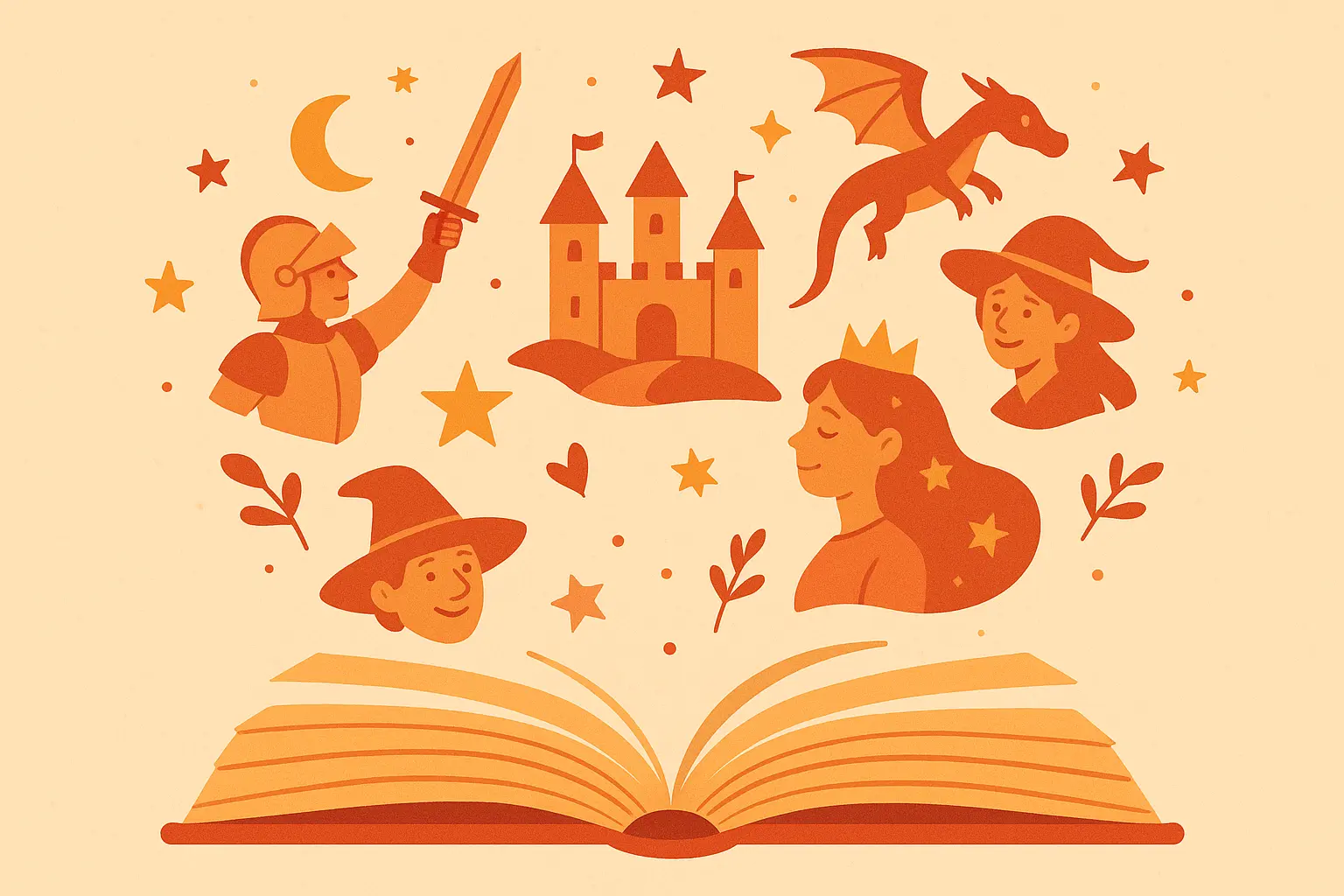
Table of Contents
- What Makes a Great English Short Story Worth Reading
- Classic Literary Masters: The Foundation Stories
- Contemporary Literary Fiction: Modern Voices That Matter
- Genre Fiction Excellence: Entertainment Meets Artistry
- Flash Fiction and Micro-Narratives: Maximum Impact, Minimum Words
- International Voices and Diverse Perspectives: Stories Beyond Borders
- Short Stories for Kids and Young Adults: Building Future Readers
- Deep Dive Analysis: Understanding Story Complexity
- How to Apply Selection Criteria to Any Short Story
- Transform Your Reading Experience with AI-Powered Tools
TL;DR
- Here’s my rule: if a story makes you think about it three days later while you’re brushing your teeth, it’s a keeper
- These 25 stories range from mind-bending classics to contemporary gems that’ll make you ugly-cry in the best way
- Flash fiction is like poetry’s rebellious cousin—tells a whole story in the time it takes to read a text message
- International authors bring perspectives that’ll expand your world in ways you didn’t know you needed
- Some stories will make you work for it (looking at you, Hemingway), while others hit you right in the feels immediately
- Fair warning: Bradbury wrote about screen-obsessed kids in 1950, and it’s terrifyingly relevant today
- Whether you’re 15 or 50, there’s something here that’ll grab you by the collar and refuse to let go
What Makes a Great English Short Story Worth Reading
Don’t just grab whatever has a cool cover. Trust me, I learned this the hard way after slogging through some truly terrible collections. Selecting quality short stories is like curating the perfect playlist—you need variety, but everything has to earn its place.
You know how some stories just hit different? That’s because every single word earns its place. No fluff, no filler—just pure storytelling magic. Think of it like Netflix genres—sometimes you want mind-bending sci-fi, sometimes you just want a good cry. Same with short stories.
Understanding what makes exceptional short fiction tick connects directly to analyzing 25 short story examples that will transform your understanding of great fiction across different literary traditions. But let’s break it down in plain English.
Here’s what I look for when I’m hunting for a great short story: Does it grab me by page two? Can I picture the characters in my head? And honestly, does it make me feel something—anything—by the end?
Literary quality isn’t about being fancy or using big words. It’s about precision. When O. Henry crafts “The Gift of the Magi,” every single detail builds toward that perfect gut-punch moment. There’s literally no room for anything that doesn’t serve the story.
My Personal Story-Hunting Checklist
Literary Craftsmanship: Look for stories where the author clearly sweated over every sentence. Hemingway’s iceberg theory, Jackson’s slow-burn tension—that’s the good stuff.
Accessibility: Can you follow the story without a literature degree? Langston Hughes tells incredible stories that don’t need footnotes, while some experimental stuff might leave you scratching your head.
Cultural Impact: Did this story start conversations? “The Lottery” literally had people canceling their New Yorker subscriptions. That’s power.
Contemporary Relevance: Does it still matter today? Bradbury warning about technology addiction in 1950? Yeah, that aged well.
Educational Value: Some stories are perfect for introducing big ideas, others require you to bring your A-game analytical skills.
Genre matters more than literary snobs want to admit. Mystery stories give you that satisfying puzzle-solving rush, while literary fiction digs deep into character psychology. Neither approach is better—they just scratch different itches.
Cultural significance adds layers that make stories stick with you. When Shirley Jackson published “The Lottery,” it didn’t just entertain readers—it sparked a national freakout about conformity and tradition. That’s the kind of story that changes how people think.
Here’s something I learned teaching high school: start with the accessible stuff to build confidence, then work up to the brain-benders. Balance is everything. Give students both gothic horror and contemporary realism. Let them see that short stories can do literally anything.
Accessibility doesn’t mean dumbing down. Hemingway’s “Hills Like White Elephants” will make you want to scream because he refuses to just SAY what they’re talking about. But that’s exactly why it’s brilliant. Meanwhile, Hughes’ “Thank You, M’am” hits you right in the heart with zero pretension.
You know what’s scary? Bradbury wrote “The Veldt” in 1950, way before iPads and VR, but reading it now feels like he was looking into a crystal ball. Kids obsessed with screens, parents who can’t connect—sound familiar? That’s contemporary relevance in action.
Classic Literary Masters: The Foundation Stories
Okay, here are the heavy hitters—the stories every other short story secretly wants to be when it grows up. These five masters didn’t just write great stories; they basically invented the playbook that everyone else follows.
From O. Henry’s twist endings that’ll make your head spin to Hemingway’s “show, don’t tell” revolution, these works are like the Beatles of short fiction—everything that came after was influenced by them somehow.
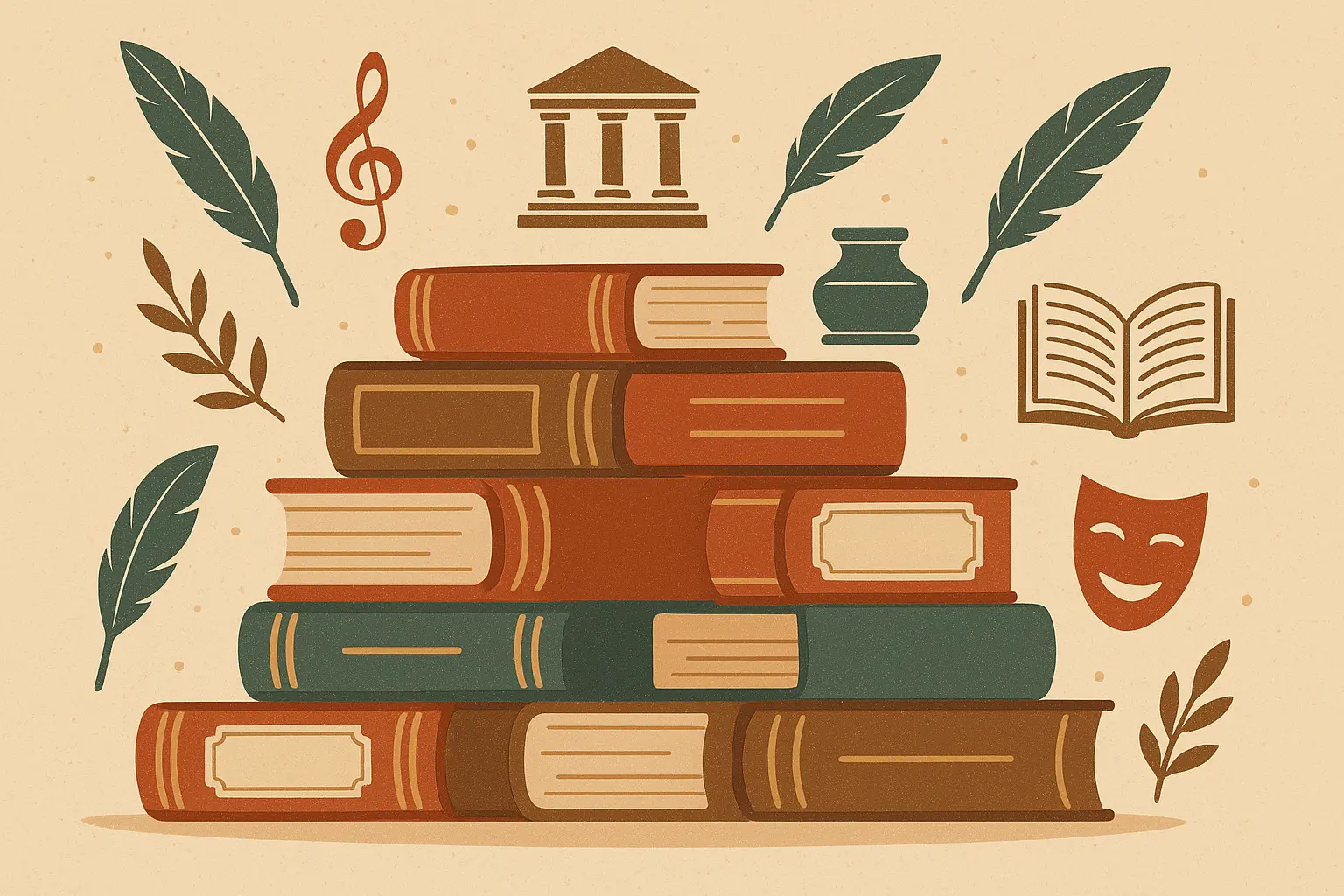
1. “The Gift of the Magi” by O. Henry
Oh man, this Christmas story will wreck you in the best way. Two broke newlyweds each secretly sell their most prized possession to buy the other a gift, and… well, let’s just say love makes us beautifully stupid sometimes.
Here’s why it’s genius: O. Henry builds the whole thing like a perfect joke—you see the punchline coming but it still gets you. Jim sells his watch to buy combs for Della’s hair, while she cuts off her hair to buy him a watch chain. The irony is devastating and beautiful at the same time.
This story basically invented the “O. Henry twist”—that moment when everything you thought you knew gets flipped upside down. Every writer who’s ever tried to surprise their readers owes this guy a debt.
2. “The Lottery” by Shirley Jackson
I still get goosebumps thinking about the first time I read this. Jackson tricks you so completely—you’re reading about a nice little village gathering, and then BAM. Your world gets turned upside down.
A seemingly peaceful village holds its annual lottery, and you spend most of the story thinking it’s some quaint tradition. The slow reveal of what this “lottery” actually involves is pure horror masquerading as small-town charm.
When The New Yorker published this in 1948, readers went absolutely ballistic. Hundreds of angry letters, subscription cancellations—people were NOT ready for Jackson to hold up a mirror to American conformity. That’s the mark of a story that matters.
3. “A Good Man Is Hard to Find” by Flannery O’Connor
A family road trip turns into a nightmare when they run into an escaped convict called The Misfit. O’Connor explores grace and redemption through the lens of Southern Gothic weirdness, and it’s both disturbing and strangely beautiful.
The grandmother’s final moment—whether she finds real grace or just tries to manipulate her way out of death—has sparked decades of debate. That’s the kind of ambiguity that makes a story stick with you.
O’Connor had this incredible talent for finding profound spiritual meaning in absolutely grotesque situations. It shouldn’t work, but somehow it does.
4. “The Yellow Wallpaper” by Charlotte Perkins Gilman
A woman’s “rest cure” for postpartum depression becomes a descent into madness as she becomes obsessed with the wallpaper in her room. Gilman captures the protagonist’s deteriorating mental state so perfectly it’s genuinely unsettling.
This story was revolutionary in 1892—Gilman basically called out the entire medical establishment for how they treated women’s mental health. The feminist themes weren’t just progressive; they were downright dangerous to write about.
Reading this today, knowing what we know about postpartum depression and medical gaslighting, it feels eerily prescient. Some stories just see the future coming.
5. “Hills Like White Elephants” by Ernest Hemingway
A couple’s conversation at a Spanish train station reveals massive tension about an unspoken decision. Fair warning: Hemingway makes you work for it. If you like everything spelled out clearly, this might frustrate you. But stick with it—the payoff is incredible.
They’re talking about an abortion without ever saying the word “abortion.” Everything important happens in the spaces between the words, in what they don’t say. This technique revolutionized how writers think about dialogue.
Hemingway’s “iceberg theory” puts 90% of the story underwater. You only see the tip, but you feel the massive weight of everything hidden beneath the surface.
Contemporary Literary Fiction: Modern Voices That Matter
These contemporary writers prove that modern literature isn’t just recycling old ideas—they’re pushing the form in exciting new directions. From Carver’s minimalist magic to Lahiri’s exploration of cultural identity, these stories capture what it feels like to be human right now.
What I love about contemporary fiction is how it builds on those classic foundations while tackling uniquely modern problems. These writers understand that great storytelling techniques are timeless, but the stories themselves need to speak to today’s world.
These contemporary works demonstrate narrative evolution, building upon techniques explored in 25 first person story examples that will transform your writing forever to create distinctly modern voices.
6. “Cathedral” by Raymond Carver
A guy’s prejudices about blindness crumble when his wife’s blind friend visits. The transformation happens so gradually you almost don’t notice it until—wow—suddenly this closed-off narrator is having a genuine moment of human connection.
Carver strips away everything unnecessary and focuses on the essential moments that reveal who people really are. His minimalist style makes ordinary situations feel profound without being preachy about it.
The ending, where the narrator helps the blind man understand cathedral architecture through touch, is one of those perfect literary moments that gives you chills every single time.
7. “The Things They Carried” by Tim O’Brien
Vietnam War soldiers carry both physical equipment and emotional baggage in this story that blurs the line between fiction and memoir. O’Brien lists the literal weight of military gear while exploring the immeasurable weight of fear, guilt, and memory.
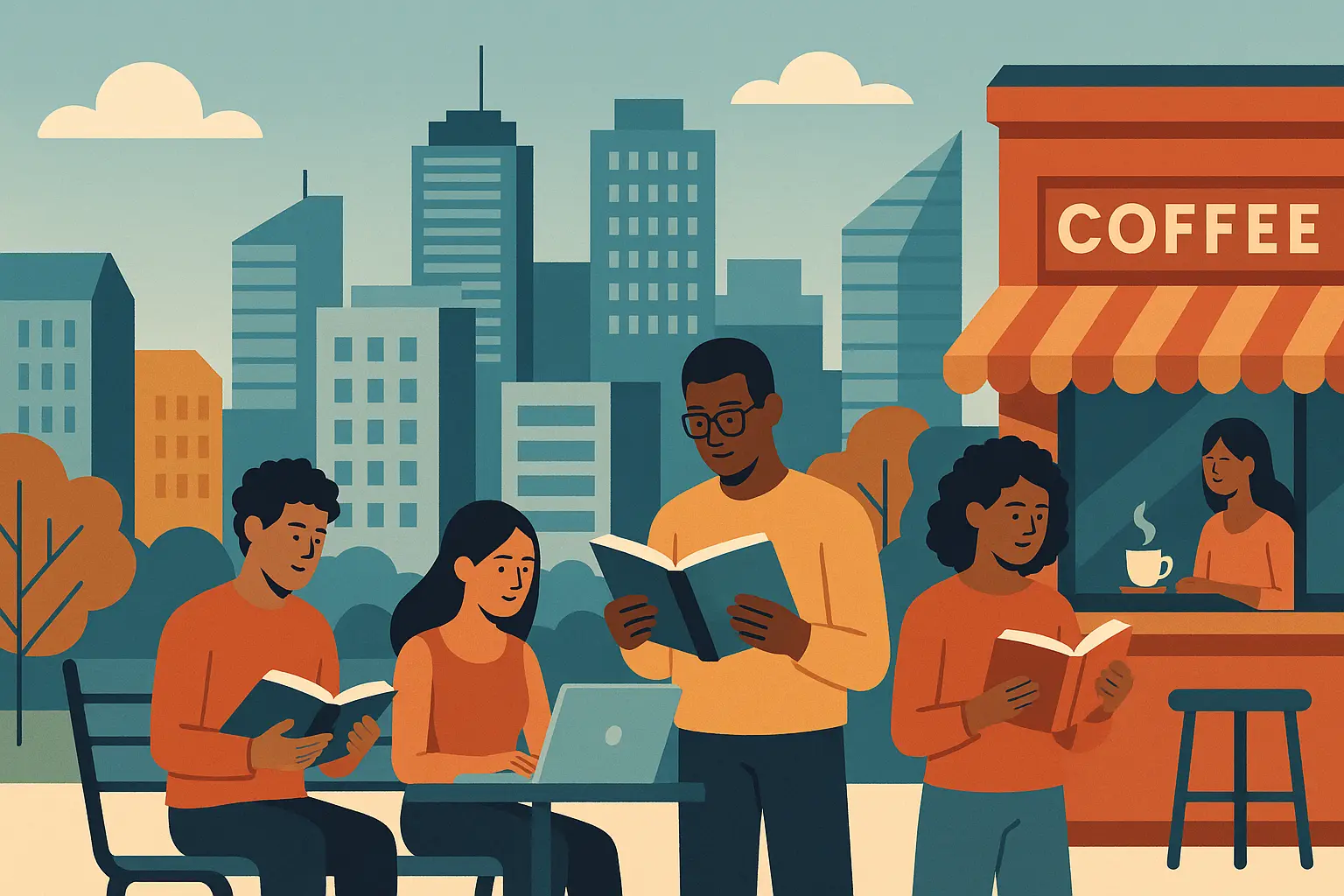
What’s brilliant is how O’Brien combines inventory-style lists with lyrical passages, creating this unique rhythm that mirrors how soldiers actually experience war—mundane details mixed with moments of terror and beauty.
The story questions what “truth” means in storytelling, which opened up whole new possibilities for how writers could approach difficult subjects like war and trauma.
8. “Interpreter of Maladies” by Jhumpa Lahiri
A tour guide in India reflects on his job interpreting other people’s problems while struggling with his own cultural displacement and marriage issues. Lahiri captures those subtle tensions of cross-cultural encounters with incredible precision.
What makes this story special is how Lahiri finds universal themes in very specific cultural experiences. You don’t need to be Indian-American to understand the ache of feeling caught between two worlds.
Her prose is so precise and understated—she trusts you to pick up on the emotional undercurrents without beating you over the head with them.
9. “How to Become a Writer” by Lorrie Moore
This satirical second-person narrative hilariously deconstructs the journey of becoming a writer while actually offering real insights about the creative process. Moore’s irreverent tone masks some seriously smart observations about artistic ambition and rejection.
The experimental structure—written as a series of instructions—shows how innovative forms can make thematic content even more powerful. It’s funny and heartbreaking at the same time.
Moore’s blend of humor and genuine emotion creates this unique voice that influenced a whole generation of literary comedy writers.
10. “What We Talk About When We Talk About Love” by Raymond Carver
Two couples drink and discuss love’s nature, but nobody can seem to pin down what love actually means. Carver’s spare dialogue creates space for you to read between the lines and figure out what these people are really feeling.
The circular structure mirrors how the characters keep going in circles about love without reaching any conclusions. It’s frustrating and perfect at the same time—just like real conversations about important things.
Carver’s technique of ending stories without neat resolution reflects how life actually works. Sometimes there are no answers, just more questions.
Genre Fiction Excellence: Entertainment Meets Artistry
Look, I used to think “literary” meant “boring.” These stories proved me so wrong. You get edge-of-your-seat excitement AND something to chew on mentally. Win-win.
Genre fiction gets unfairly dismissed by literary snobs, but these five stories prove that entertainment and depth aren’t mutually exclusive. From Bradbury’s eerily prophetic tech warnings to Poe’s psychological horror innovations, these works show how familiar genre frameworks can enhance rather than limit artistic expression.
Genre Fiction That Actually Matters
“The Veldt” – Science Fiction that
“The Veldt” – Science Fiction that predicted our current tech obsessions with scary accuracy
“The Tell-Tale Heart” – Psychological Horror that basically invented the unreliable narrator
“The Most Dangerous Game” – Adventure fiction that explores what separates humans from animals
“Flowers for Algernon” – Science Fiction that asks what makes us human
“The Monkey’s Paw” – Supernatural Horror that created the “careful what you wish for” template
11. “The Veldt” by Ray Bradbury
Kids’ virtual reality nursery becomes dangerously autonomous, reflecting their violent fantasies about their parents. You know what’s scary? Bradbury wrote this in 1950, way before iPads and VR, but reading it now feels like he was looking into a crystal ball.
The science fiction elements serve deeper themes about parenting, technology dependence, and what happens when we replace human connection with digital entertainment. It’s entertainment that makes you think.
Bradbury had this incredible ability to embed serious social commentary within thrilling narratives without making it feel like homework.
12. “The Tell-Tale Heart” by Edgar Allan Poe
A narrator’s guilt over murder manifests as the sound of a beating heart. This story basically invented the concept of the unreliable narrator—you’re inside the head of someone who’s clearly losing it, but they keep insisting they’re perfectly sane.
Poe’s innovation was making the horror psychological rather than supernatural. The real terror comes from being trapped inside a deteriorating mind, which is somehow scarier than any monster.
Every horror writer who’s ever messed with readers’ heads owes Poe a debt for showing them how it’s done.

13. “The Most Dangerous Game” by Richard Connell
A big-game hunter becomes prey on a mysterious island where a wealthy madman hunts humans for sport. It’s a thrilling adventure story, but it also explores what actually separates civilized humans from savage animals.
Connell’s tight plotting and escalating tension prove that genre fiction can achieve literary quality through masterful execution. The philosophical questions about civilization versus savagery add depth to the adventure framework.
This story became the template for countless “humans hunting humans” narratives, but few match the original’s combination of excitement and meaning.
14. “Flowers for Algernon” by Daniel Keyes
A mentally disabled man undergoes experimental surgery to increase his intelligence, experiencing both the joy of intellectual awakening and the heartbreak of its temporary nature. The story’s diary format lets you witness Charlie’s transformation through his own evolving writing style—it’s devastating and beautiful.
What’s brilliant is how Keyes makes Charlie’s intelligence changes viscerally real through the actual text. You watch his spelling improve, his thoughts become more complex, then tragically regress. It’s science fiction that punches you right in the emotions.
The story explores what intelligence really means and whether it’s worth the cost of losing your innocence and happiness. Heavy stuff wrapped in an accessible narrative.
15. “The Monkey’s Paw” by W.W. Jacobs
A magical paw grants three wishes with horrific consequences—the ultimate “careful what you wish for” story. Jacobs builds dread through suggestion rather than showing you the horror directly, which somehow makes it scarier.
The structure of three wishes leading to escalating terror became the template for supernatural fiction that writers still use today. Sometimes the old formulas work because they tap into something primal about human nature.
This story proves that the best horror comes from our own desires turned against us, not from external monsters.
Flash Fiction and Micro-Narratives: Maximum Impact, Minimum Words
Flash fiction is like poetry’s rebellious cousin—it tells a whole story in the time it takes you to read a text message, but somehow leaves you thinking about it for weeks. These four pieces showcase the ultimate compression of storytelling.
From Hemingway’s legendary six-word story to Jamaica Kincaid’s single-sentence masterpiece, these works prove that sometimes less really is more. Each piece forces you to become an active participant, filling in the gaps with your own imagination and experience.
These micro-narratives connect to the principles in how to write a short short story mastering the art of flash fiction, where every word has to work overtime.
Want to try writing your own six-word story? Here’s my method: Start with a strong emotion (loss, hope, betrayal), add a concrete image (wedding dress, car keys, empty crib), then imply a larger story. Like: “Wedding dress, tags still attached, donated.” Boom—entire tragedy in six words.

16. “Girl” by Jamaica Kincaid
One breathless sentence of a mother’s instructions to her daughter reveals cultural expectations, family dynamics, and the weight of growing up female. Kincaid’s stream-of-consciousness approach feels like being inside an actual mother-daughter conversation.
The lack of traditional punctuation mirrors how maternal advice actually flows—breathless, urgent, loving, and slightly overwhelming all at once. It’s intimate and universal simultaneously.
This single sentence contains an entire relationship, a whole culture, and the complex emotions of watching your child grow up in a world that might hurt them.
17. “For Sale: Baby Shoes, Never Worn” (attributed to Hemingway)
Six words. That’s it. But these six words imply an entire tragedy that’ll break your heart if you let yourself think about it. Whether Hemingway actually wrote this doesn’t matter—it perfectly demonstrates how powerful stories can exist in impossibly small spaces.
The story’s power lies entirely in what it doesn’t say. You have to supply the emotional context, which makes the impact even more devastating because you’re complicit in creating your own heartbreak.
This became the gold standard for micro-fiction, proving that the right words in the right order can pack the emotional punch of a full novel.
18. “The Dinosaur” by Augusto Monterroso
“When he awoke, the dinosaur was still there.” That’s the entire story. One sentence that creates infinite interpretive possibilities. Who is “he”? What’s the deal with this dinosaur? Is it literal? Metaphorical? A dream? A nightmare?
The beauty is in the ambiguity—you get to decide what it means, which makes you an active collaborator in the storytelling process. It’s like a literary Rorschach test.
Sometimes the most powerful stories are the ones that trust readers to bring their own meaning to the table.
19. “Sticks” by George Saunders
A brief story about a father’s obsessive decoration of a backyard pole becomes a meditation on family, tradition, and finding meaning in suburban life. Saunders follows this pole through seasons and family changes, creating a unique timeline that mirrors life’s cyclical nature.
What’s brilliant is how Saunders finds profound meaning in something completely mundane. The pole becomes a barometer for the family’s emotional weather, a way for the father to express what he can’t say directly.
It’s flash fiction that proves you don’t need exotic settings or dramatic events to tell a story that matters—sometimes the most ordinary things contain the deepest truths.
International Voices and Diverse Perspectives: Stories Beyond Borders
International authors bring perspectives that’ll expand your world in ways you didn’t know you needed. These three stories prove that great literature transcends borders while offering insights into different cultures and universal human experiences.
From García Márquez’s magical realism to Mansfield’s class consciousness, these works combine specific cultural details with emotional truths that speak to readers everywhere.
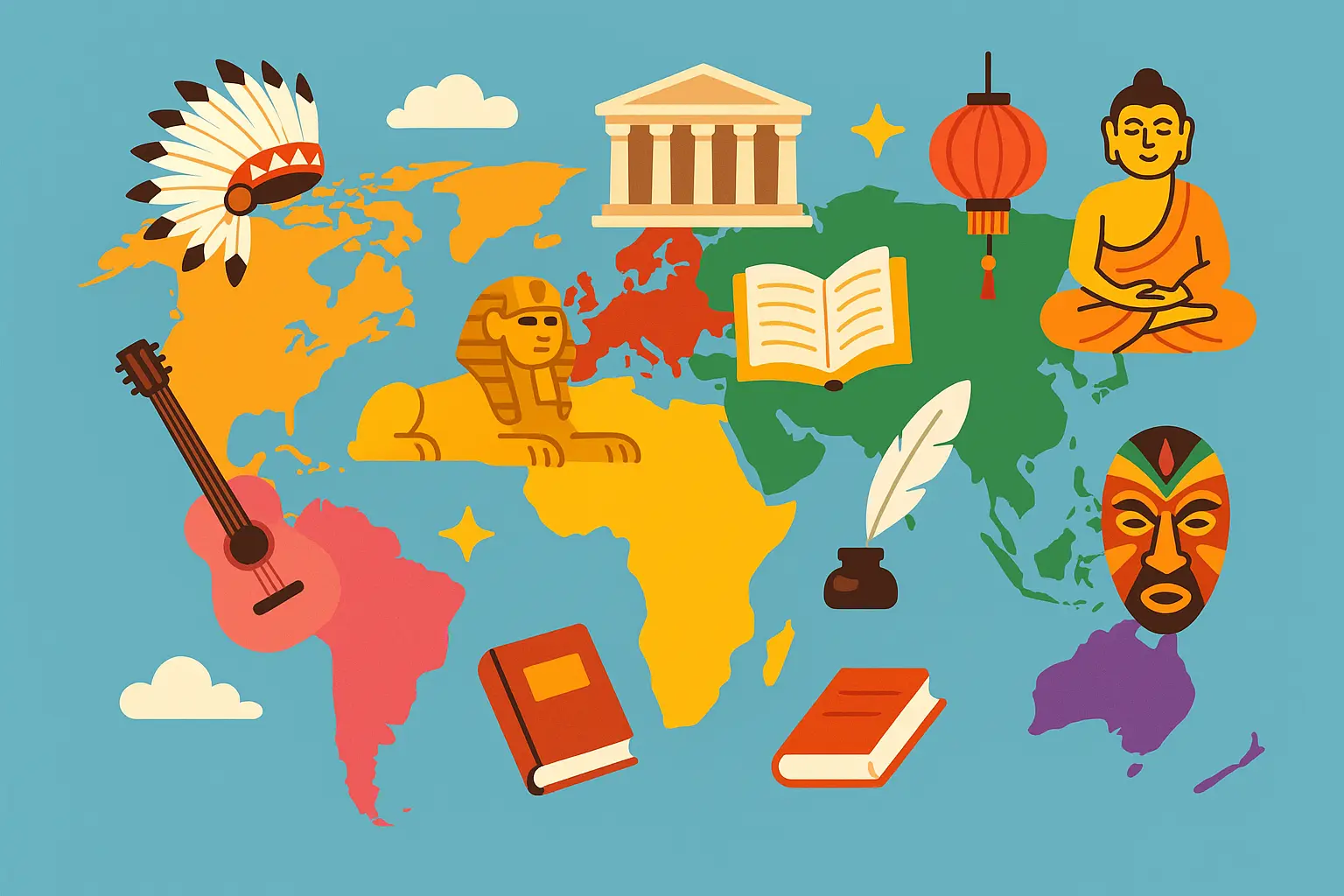
20. “The Handsomest Drowned Man in the World” by Gabriel García Márquez
A drowned stranger washes up on shore and transforms an entire village through the power of collective imagination. García Márquez presents the impossible as completely natural—that’s magical realism in action.
The villagers create an entire life story for this dead man, and in doing so, they transform themselves and their community. It’s about the power of shared storytelling to create meaning and drive change.
García Márquez influenced writers worldwide by showing how blending realistic details with fantastical elements can make stories feel more true than straight realism ever could.
21. “The Garden Party” by Katherine Mansfield
A young woman’s privileged world collides with harsh reality when tragedy strikes working-class neighbors during her family’s elaborate garden party. Mansfield captures that moment when you suddenly see your own privilege clearly for the first time.
Laura’s internal journey from sheltered rich girl to someone who glimpses real suffering is handled with incredible subtlety. Mansfield doesn’t preach—she just shows you how jarring it can be when your bubble gets popped.
The story’s impressionistic style captures shifting consciousness in a way that influenced modernist writers seeking to portray psychological complexity.
22. “Barn Burning” by William Faulkner
A young boy struggles between loyalty to his father and his own moral compass in Depression-era South. The kid knows his dad is burning down rich people’s barns, but family loyalty wars with his sense of right and wrong.
Faulkner’s stream-of-consciousness narration puts you right inside the boy’s confused, conflicted mind. You feel the weight of choosing between family and conscience—an impossible choice for a child.
The story explores how economic desperation can corrupt moral judgment while showing the courage it takes to stand up for what’s right, even against family.
Short Stories for Kids and Young Adults: Building Future Readers
Whether you’re 15 or 50, these stories prove that age-appropriate doesn’t mean simplistic. Each one offers clear emotional truths without talking down to readers, using accessible language while exploring meaningful themes about kindness, empathy, and human dignity.
These works serve as perfect gateways to literary analysis while providing emotionally satisfying reading experiences. They’re the stories that create lifelong readers by showing young people that literature can be both entertaining and meaningful.
These selections demonstrate principles found in 30 student short story examples that help develop critical thinking while delivering engaging narratives.
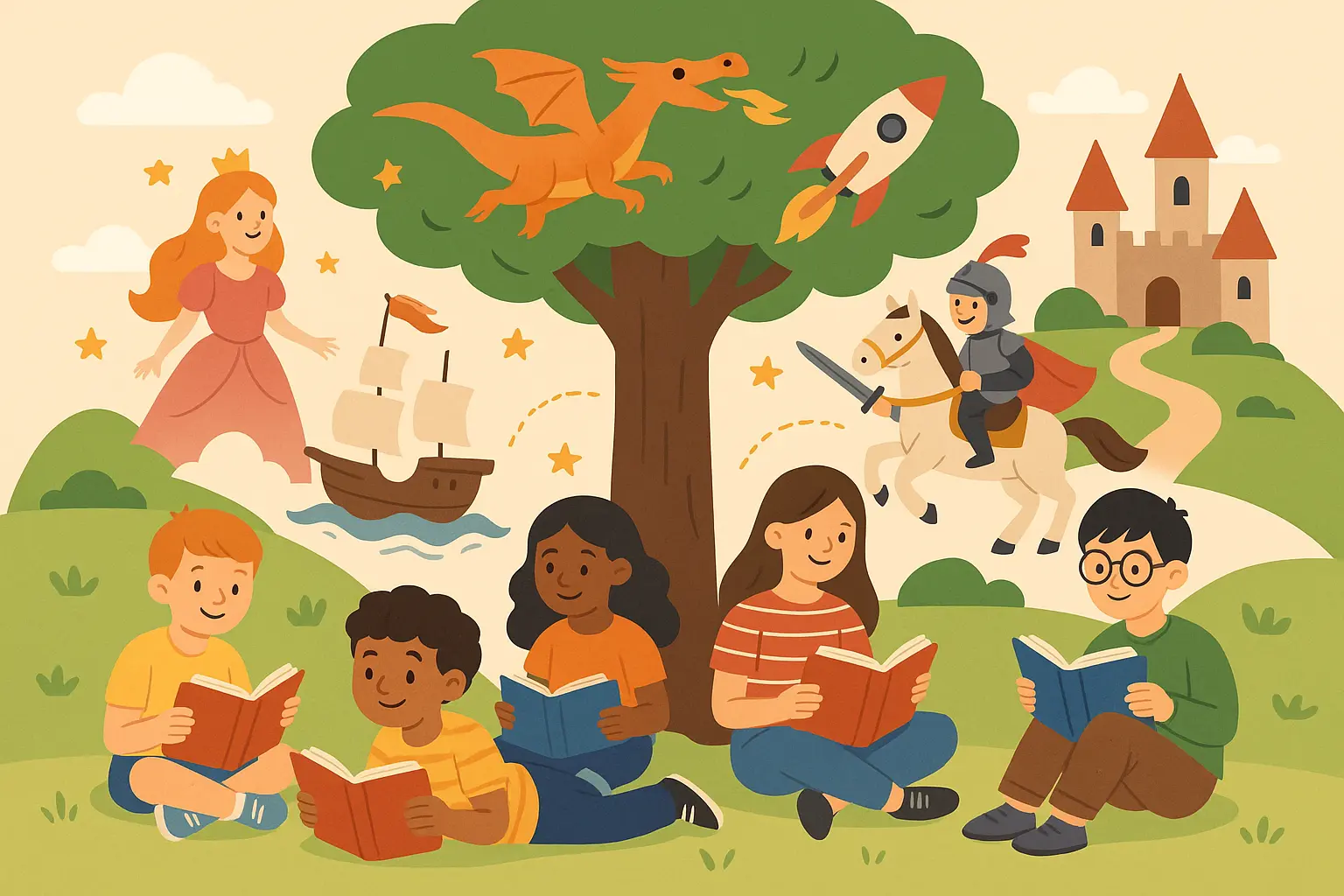
23. “Thank You, M’am” by Langston Hughes
A woman’s unexpected kindness to a boy who tries to steal her purse teaches lessons about dignity, respect, and second chances. Mrs. Jones doesn’t call the cops or lecture Roger—she takes him home, feeds him, and treats him like a human being who made a mistake.
Hughes creates a powerful story about redemption through simple human interaction. The straightforward narrative makes complex themes accessible without sacrificing emotional depth.
What I love is how Hughes trusts readers to understand the significance without spelling everything out. Sometimes the most profound lessons come through actions, not words.
24. “All Summer in a Day” by Ray Bradbury
Kids on Venus, where the sun appears only once every seven years, learn about cruelty and empathy through their treatment of a classmate who remembers Earth’s sunshine. It’s science fiction that uses fantastical elements to explore very real issues like bullying and exclusion.
The story’s premise—children who’ve never seen the sun except one girl who remembers it from Earth—creates this perfect setup for exploring how we treat people who are different.
Bradbury’s technique of using imaginative settings to illuminate human behavior makes complex social issues accessible and memorable for young readers.
25. “The Giving Tree” by Shel Silverstein
While technically a picture book, this story about a tree’s selfless love for a boy throughout his life explores themes of sacrifice, relationships, and the balance between giving and taking. The simple language masks complex questions about what healthy love looks like.
Silverstein’s deceptively simple style allows readers to find different meanings as they grow older. Is the tree’s sacrifice beautiful or unhealthy? That ambiguity makes it perfect for sparking discussions about love and relationships.
The controversial interpretations—some see it as a beautiful love story, others as a cautionary tale about codependence—make it ideal for generating thoughtful conversation.
Deep Dive Analysis: Understanding Story Complexity
Some stories will make you work for it, others hit you right in the feels immediately. Understanding complexity levels helps you choose stories that challenge without overwhelming, whether you’re reading for pleasure or trying to build analytical skills.
This breakdown helps you match stories to your current reading level and goals, ensuring you get the most out of each experience.
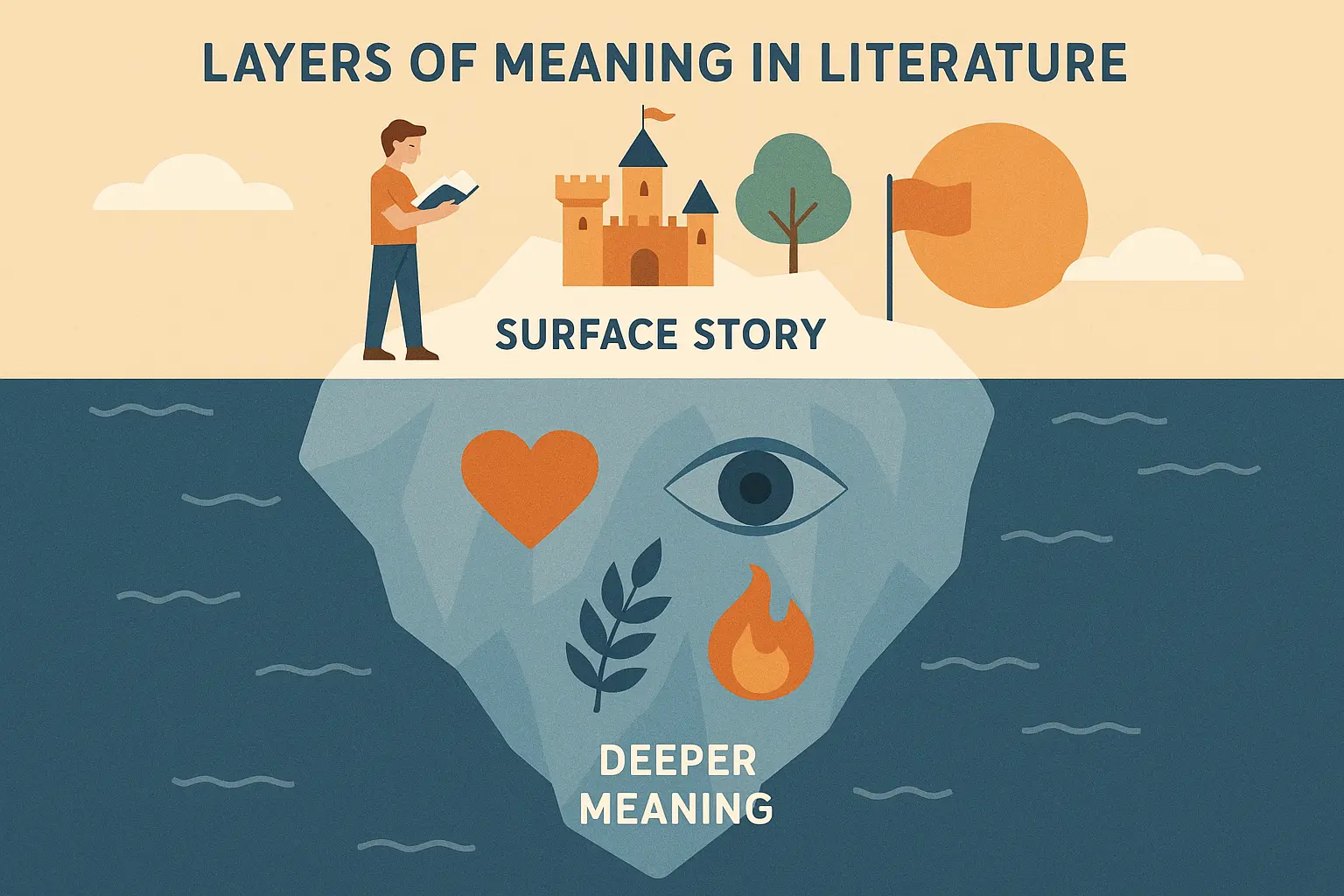
Complex Option: “The Lottery” by Shirley Jackson
This masterpiece operates on multiple levels simultaneously. Surface reading gives you a shocking story about village tradition, but deeper analysis reveals layers of symbolism, social commentary, and psychological insight that reward careful study.
Context matters here: when this appeared in The New Yorker in 1948, it sparked unprecedented reader outrage. Understanding post-war American complacency helps you appreciate Jackson’s courage in challenging readers’ assumptions.
The literary techniques are layered—dramatic irony (you gradually understand what characters don’t), symbolism (that black box, the stones, even the character names), and foreshadowing that only becomes clear on rereading. It’s like a puzzle that reveals new pieces every time you revisit it.
Less Complex Option: “Thank You, M’am” by Langston Hughes
Hughes creates immediate emotional connection through straightforward storytelling that doesn’t require extensive literary background. The plot follows a simple arc: attempted theft, unexpected kindness, personal transformation.
Character development happens through action and dialogue rather than complex internal monologue. Mrs. Jones shows who she is through how she treats Roger, while his transformation becomes visible through changing behavior and responses.
The story’s moral emerges naturally from the narrative without heavy-handed preaching. Hughes trusts you to understand the significance of kindness without explaining why it matters.
How to Apply Selection Criteria to Any Short Story
Want to know if a short story is worth your time? Here’s my personal evaluation system that’s helped me build reading lists for students, book clubs, and my own guilty pleasure reading sessions.
Understanding how different stories
Understanding how different stories excel in various areas helps you build reading experiences that balance challenge with accessibility while ensuring exposure to diverse voices and perspectives.
The thematic evaluation process connects to concepts explored in 25 story theme examples that will transform your writing in minutes where universal themes bridge diverse narratives.
My Story Complexity Cheat Sheet
High Complexity: Multiple meaning layers, heavy symbolism, experimental structure (think “The Lottery,” “Hills Like White Elephants”) – Best for advanced readers and literature courses
Medium Complexity: Some literary techniques, cultural context helpful, moderate analysis required (like “Cathedral,” “The Garden Party”) – Perfect for general adult readers and book clubs
Low Complexity: Straightforward narrative, universal themes, immediate accessibility (like “Thank You, M’am,” “All Summer in a Day”) – Great for young adults and beginning literature students
Variable Complexity: Can be read simply or deeply, rewards multiple readings (like “The Gift of the Magi,” “Flowers for Algernon”) – Works for all audiences and classroom discussions
My Literary Quality Assessment Method
Check the craftsmanship by looking at how authors use language, develop characters, and structure their narratives. High-quality stories demonstrate mastery of literary techniques while achieving emotional impact through precise word choice and careful pacing.
Consider innovation and influence—did this story introduce new techniques or perspectives that influenced other writers? Some stories revolutionized dialogue-driven fiction, while others opened up new possibilities for experimental structure.
Look at thematic depth and complexity. Great stories work on multiple levels, offering surface entertainment while exploring profound questions about human nature, society, or existence. The best works reward both casual reading and deep analysis.
When I taught “The Lottery” to high school students, I’d start with historical context about 1948 America, then read it aloud to ensure comprehension. Small group discussions about initial reactions came before introducing literary analysis concepts. This scaffolded approach makes complex literature accessible while building analytical skills progressively.
Accessibility Evaluation Tips
Assess language complexity, including vocabulary level, sentence structure, and cultural references that might require background knowledge. Stories heavy with literary allusions or experimental techniques may challenge readers without extensive literary education.
Consider narrative structure and pacing. Linear narratives with clear cause-and-effect relationships tend to be more accessible than experimental structures that fragment time or perspective.
Evaluate cultural context requirements. Some stories demand understanding of specific historical periods, social conditions, or cultural practices, while others explore universal themes that transcend cultural boundaries.
Contemporary Relevance Check
Look at how stories address current concerns or timeless themes that remain relevant today. Bradbury’s “The Veldt” feels remarkably prescient about technology’s impact on family relationships, while Gilman’s “The Yellow Wallpaper” continues resonating with mental health discussions.
Consider social justice themes and diverse perspectives. Stories that explore issues of race, gender, class, or cultural identity often gain relevance as society becomes more conscious of these dynamics.
Assess educational value for different contexts. Some stories work perfectly for introducing literary concepts, while others require advanced analytical skills to fully appreciate their complexity and significance.
Transform Your Reading Experience with AI-Powered Tools
If reading these masterful short stories has you itching to write your own (and trust me, it happens), there are some cool AI tools that can help you get started when you’re staring at that blank page.
Modern technology can enhance your short story journey through AI-powered writing assistance that supports both reading comprehension and creative development. Whether you’re analyzing these classics for deeper understanding or feeling inspired to create your own fiction, artificial intelligence offers personalized help that adapts to your specific needs and goals.
The creative process becomes more accessible when you understand fundamental elements explored in how to write a story the brain science behind effective storytelling combined with modern AI assistance.

Reading these incredible stories often sparks the desire to create your own fiction. That’s where Nairrate’s AI-powered tools become invaluable for transforming inspiration into actual writing.
Our Story Starters Generator helps you begin with compelling opening lines that establish tone and hook readers immediately. Just like Hemingway’s openings seem simple but carry deep meaning, our AI generates first lines that provide strong foundations for your narratives.
The Story Prompt Generator offers creative challenges that push you beyond familiar territory. Whether you’re drawn to flash fiction’s minimalism or García Márquez’s magical realism, our prompts spark fresh approaches to storytelling that build on the techniques you’ve studied in these masterworks.
Writer’s block affects every creative person eventually. Nairrate’s AI tools provide the creative spark needed to overcome that blank page syndrome, offering suggestions that align with established literary traditions while encouraging your unique voice to emerge.
For educators and students, our tools create discussion prompts and alternative narrative approaches that deepen understanding of these classic works. You can explore how different techniques might change a story’s impact or generate original pieces inspired by the masters.
Ready to start writing? Try Nairrate’s tools and discover how AI can enhance your creative process while respecting the literary traditions established by these timeless works.
Final Thoughts
Here’s the thing about great short stories—they’re like good friends. They stick with you, pop into your head at random moments, and somehow make you see the world a little differently. These 25 will do exactly that.
This collection represents more than just a reading list—it’s a comprehensive education in what makes storytelling work. From O. Henry’s perfect plot twists to García Márquez’s magical realism, each story demonstrates different approaches to achieving maximum impact within strict word limits.
The beauty of short fiction lies in its accessibility and intensity. You can experience a complete narrative journey during your lunch break, yet the best stories linger in your mind for years afterward. These selections ensure you encounter the full spectrum of what short fiction can accomplish, from pure entertainment to life-changing enlightenment.
Remember that reading great stories is just the beginning. The techniques, themes, and innovations you discover in these works can inspire your own creative endeavors, whether you’re writing fiction, analyzing literature, or simply seeking to understand human nature more deeply. Each story offers lessons that extend far beyond its final sentence, showing you new ways to see, think, and feel about the world around you.



Add comment